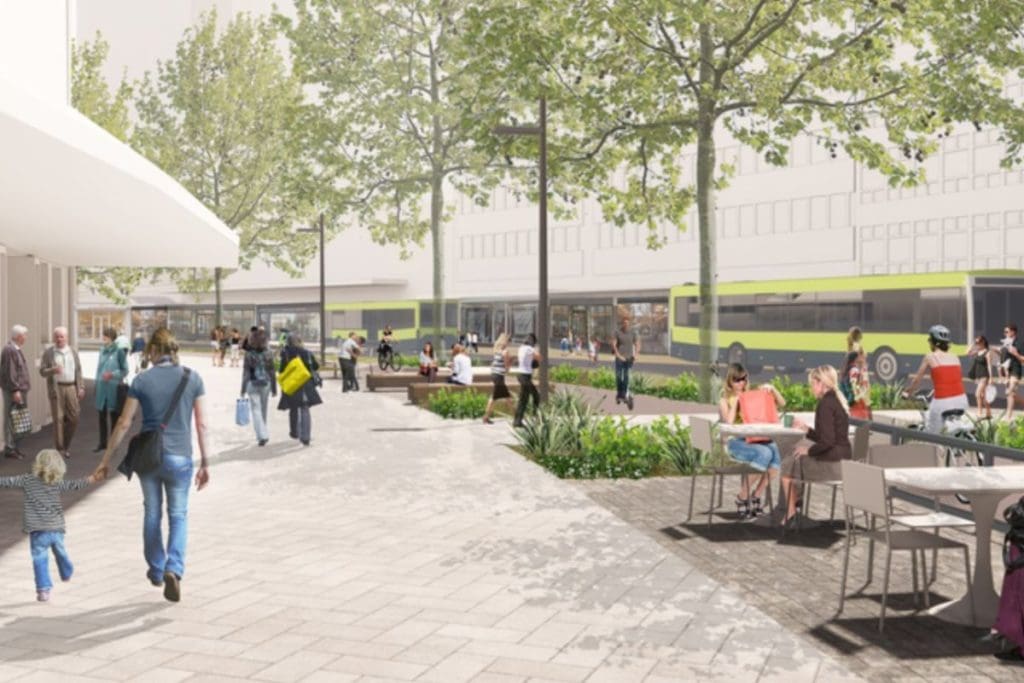Wellington to Ban Cars from City’s Main Streets

Wellington, New Zealand
Wellington is moving ahead with plans to ban cars from four main ‘Golden Mile’ streets – Courtenay Place, Lambton Quay, Manners and Willis Streets.
The Golden Mile that runs along Lambton Quay, Willis Street, Manners Street and Courtenay Place, is Wellington’s prime employment, shopping and entertainment destination. It is the city’s busiest pedestrian area and is the main bus corridor; with most of the city’s core bus routes passing along all or part of the Golden Mile every day.
The streets will only be open to buses, cyclists and pedestrians. Side streets will also be closed off where they intersect with them.
Carparks would be removed and footpaths widened, and Midland Park on Lambton Quay would also be expanded.
The plan prioritises pedestrians providing 75 percent more footpath space.
The retail sector and many businesses strongly opposed the plan, fearing they would lose customers and make getting stock delivered more difficult.
However, earlier consultation showed the majority of the public backed the move to ban cars.
It is part of the Let’s Get Wellington Moving (LGWM) program – a NZ$6.4 billion (A$6 billion) transport package for the capital. Let’s Get Wellington Moving is a joint project between Wellington councils and Waka Kotahi(NZ Department of Transport), with the capital’s city and regional councils funding 40 percent and the government picking up the rest of the tab.
The business case will be finalised next few months before being agreed to by the councils and Waka Kotahi.
There will then be 12 months of detailed design work and consultation with the business community before it comes back again to the councils and the Transport Agency for final approval and funding.
Wellington Mayor Andy Foster said it would transform the way people used the city and he encouraged the business community to work with planners over the coming year.
He said about 22 percent of people travelled to the Golden Mile by car, and only about 3 percent of people shopping there actually parked there.
Greater Wellington Regional Council chair Daran Ponter said there was no denying there would be some pain along the way but this was a step in on the path – with the other parts of the LGWM plan – to get the city moving.
LGWM three-year programme director Siobhan Procter said the plan was to ensure the city had a vibrant and engaging environment downtown.
“(And) encourage people to move through the corridor, but we don’t want them just to move through, we want them to dwell, linger, move through it slowly,” he said.
“Because if they do that, they’re more likely to spend more and encourages more retail and more hospitality.
“35 percent of the retail spend comes from pedestrians, 32 percent from public transport users, and 23 percent from private vehicles (users).”
She said a survey showed 48 percent of people said they would visit as often as they did now after the changes were made, and 46 percent said they would visit more often.
“So the main conclusion was that there was very little risk of any downside to retailers.”
Mayor Foster said the majority of the council were enthusiastic about the plan – with only one or two not so sure.
Construction is expected to take two years – starting in late 2022 – and cost up to $79 million.
The City of Wellington Council has also been discussing introducing a motor vehicle congestion charge area, along the line of the long-established one in the City of London, plus allocating NZ$108 million (A$101 million) for new cycleways over the next 10 years.
Most of this article was first published on rnz.co.nz
